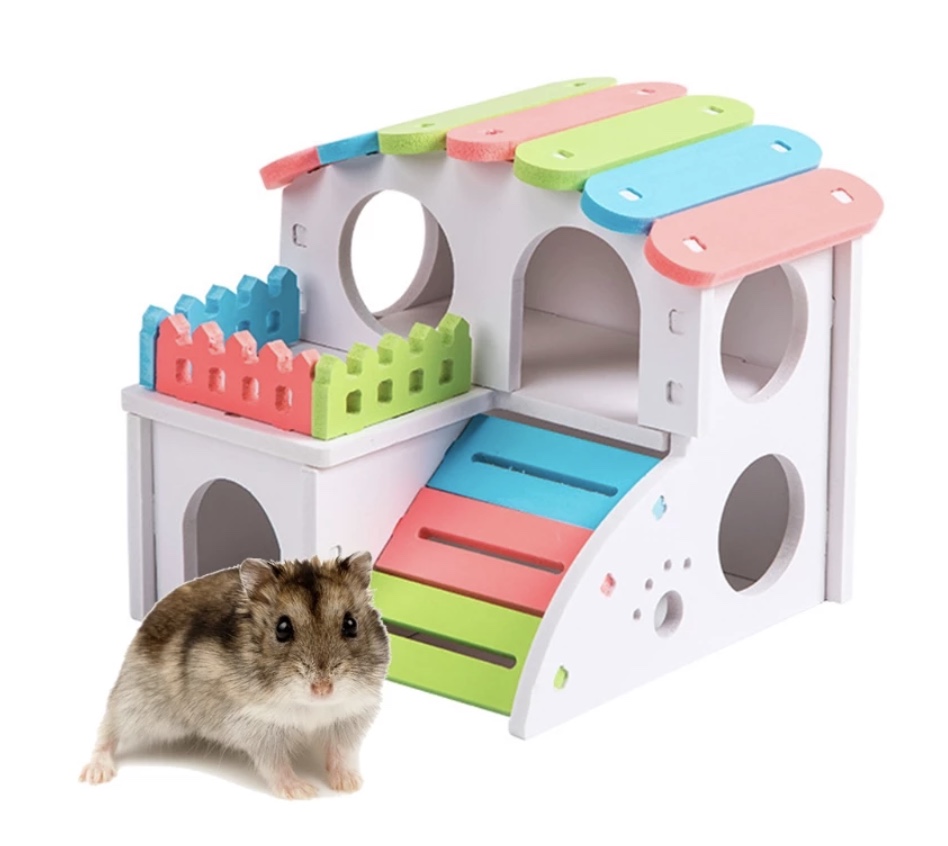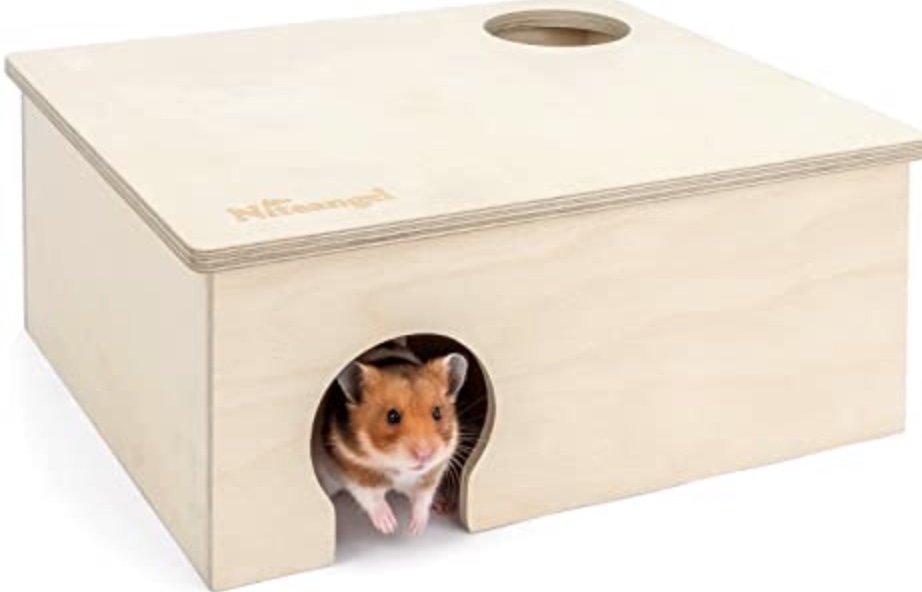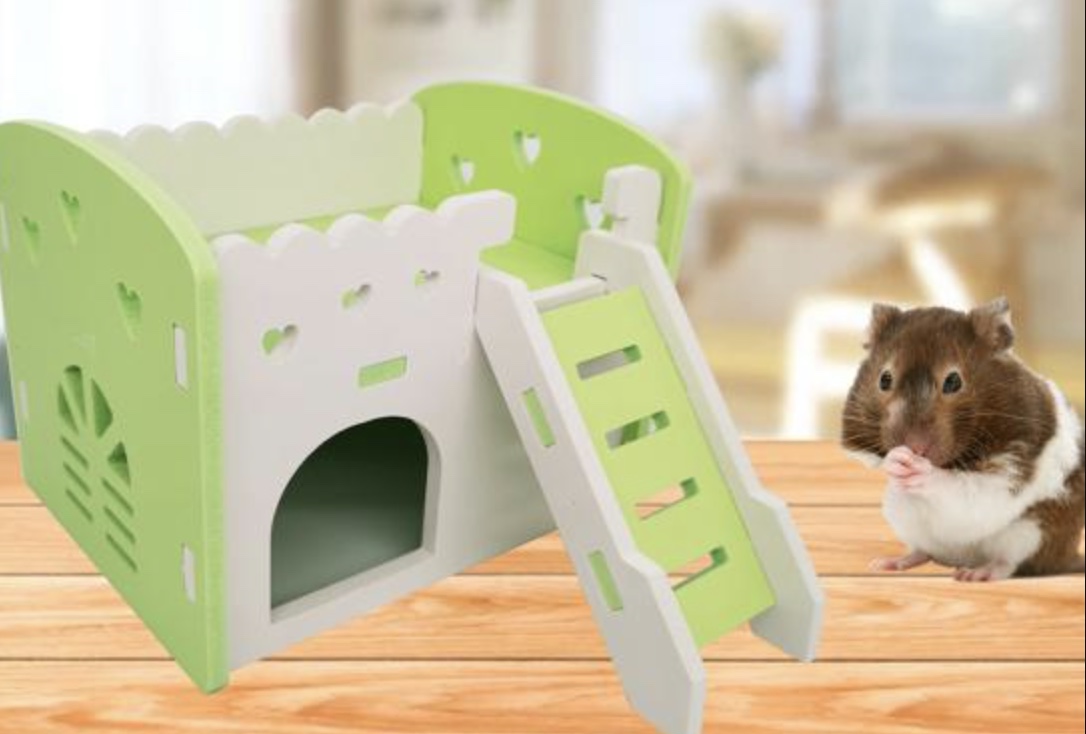Hamsters are cute, playful, lovable pets popular among pet enthusiasts. Taking care of these little pets involves great attention to detail, particularly when it comes to their caging. These tiny fur balls have a curious nature and love exploring the surroundings. Moreover, they feel secure only when they find some place to hide, sleep and rest. Adding a small hideout to their cage is a great way to make your hamster more comfortable.
In this guide, we discuss how you can make a DIY hamster hideout to give your little rodent an interesting, safe living space.
DIY Hamster Hideouts – A Complete Guide

Hamsters are adorable and easy to care for, making a great addition to pet-loving families. However, these rodents are neat by nature. In the wilds, they have separate spaces for sleeping, eating, and eliminating. They also like climbing over small structures and nestling into nooks. A hamster hideout is a great way to improve your rodent’s comfort in the cage. Putting a small hideout in its living area will give it the much-needed retreat.
While there are several options available for hamster houses and hideouts, it is a great idea to make one yourself. Hamsters are not picky about what the house looks like or is made out of so you can create a DIY hideout using your creativity to save money and quickly get something that suits your little pet. Making your own hamster hideout from materials available in the home is cheap, easy, and fun.
One of the easiest ways to make a DIY hamster hideout is to use a cardboard box. Simply find a small box smaller in size than the cage and big enough to accommodate the pet. Just cut a hamster-sized hole on one side and place it in the cage. However, cardboard is not easy to clean, so you may have to replace the nest whenever you clean the cage.
A better idea is to make a permanent hideout using plastic or wood and use the cardboard box occasionally for a change. PVC pipe lasts longer than cardboard and is tougher as well. You can easily find a 1-2 feet long pipe with a diameter of about 6-7 inches. Simply block one end of the pipe with paper or cardboard and place it in the cage. Wood is also a good material choice for a hamster hideout.
While you may have often seen hamsters sleeping in fancy things like baked bean cans, you should avoid using metals to make your hamster home. They have sharp edges and can even rust, posing health hazards to your tiny pet. Also, don’t use soft plastic materials like milk bottles as they can be chewed up quickly. Thin plastic bottles develop sharp edges when chewed. A great choice for a hideout is a tough plastic or clay flower pot. If it has a big enough hole, you can place it upside down or on the side if not.
Wooden Hamster Hideouts
Wooden hamster hideouts have a classy traditional look that adds a great charm to your pet cage while giving your little rodent everything it would want to feel safe and comfy. There are many options in wood available in the market but creating one yourself is easy as well. Though wood is more absorbent than other materials, you can use a wooden box to make a perfectly functional hamster hideout.
A wood hideout should work well if the base is kept open, so the bottom should be made of bedding and not wood. Making a nest house out of wood is not complicated; it can be quickly done with the help of an intermediate carpenter with some basic tools. You simply need five pieces of wood, a saw and some screws to get started. Make sure you get non-toxic wood; you can use non-toxic wood glue instead of screws.
To construct a DIY wooden hamster hideout, make a five-sided box with an open end facing the biggest side. Simply cut out an archway in the size of the rodent at one end and it is done. See that you don’t paint the wood as it is often toxic. Place the box in the cage and let the hamster use your DIY wooden hideout to chill out when stressed!
Cute Hamster Hideout Pictures

There is a whole lot of varieties when it comes to selecting a hamster house for your pet. You can find some really cute hideout designs that look as adorable as their inhabitants. Tiny nests come in playful colors, shapes, and materials to appeal to the eyes and add to your décor. Some manufacturers offer some really creative and innovative designs anybody would love to add to their beloved pet’s home.
Benefits of Hamster Hideouts

As a hamster parent, you might get your pet the most spacious and comfortable cage to roam and rest in. However, this tiny animal has an instinct of nestling in the wilds and hiding out in small structures. It may not feel safe and comfortable when left in the cage all day. At times, it gets stressed and anxious which is when it needs something to hide under.
A hamster hideout provides the rodent the much-needed hiding place in the cage to give it a feeling of security when in your home. The hideout serves as a space where it can relax or rest when stressed and get comfortable again. This will keep your hamster happy and make it comfortable interacting with you. A hideout can even avoid any aggressive behavior you may otherwise see. Regardless of the type and material used to make it, a hamster hideout gives your furry ball a place to nest where it feels safe and secure.
Final Thoughts
If you have brought home a cute hamster, you must consider adding a hideout to its cage to keep the pet comfortable and secure. While there are plenty of options available in the market, making a DIY hideout is quite easy. This guide should help you make a quick home for your hamster where it can relax and destress, staying healthy and happy in your home.
